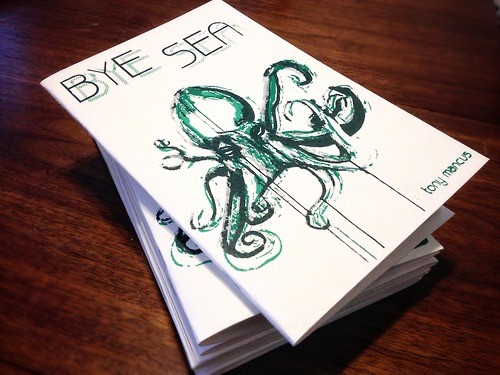Tree Light Books
41 pages, $12
Review by Hannah Rodabaugh
Tony Mancus’ wonderful chapbook collection Bye Sea is a fascinating excursion into cultural sea tropes and the ways we reclaim them for the personal or private. In this whimsical collection, pirates, madras, the sea shanty, weather predictions (very sailor), cartography, model ships in bottles, and yes, even treasure chests are recreated, or more accurately, regrown into a set of individual gestures that seek to expand outside of their cultural associations while they are still at some level unable to escape them.
However, the first thing that strikes you when reading this collection is not the poems, though they deserve our best attention, but the inspired typography and design. Everything about this collection speaks to the quality of the design process. The cover bears a beautiful, original screen-print of an octopus. (I have a great deal of affection for the octopus, so perhaps I am biased!) The typography and page layouts throughout also are absolutely gorgeous. In all honesty, this is one of the most aesthetically pleasing reading experiences I have had in quite some time. Continue reading
![[PANK]](https://pankmagazine.com/wp-content/themes/pank/assets/images/pank-logo-large.png)

